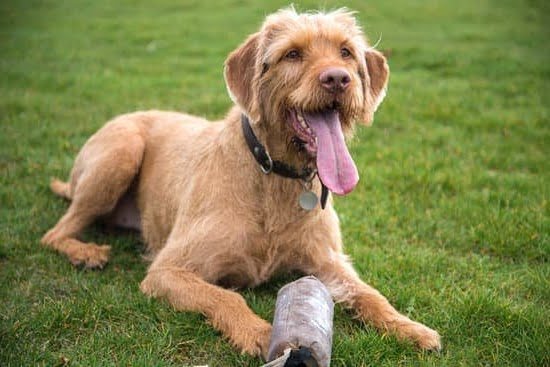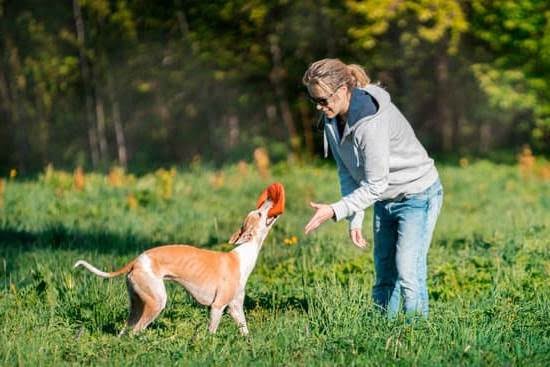Introduction
Long lead dog training is a great way to train your dog for important skills such as recall, down stay, leash walking, and more. It builds trust between you and your dog, gives them the ability to practice many tasks with more freedom than a normal lead might give them, and reinforces the owner’s leadership role. The long lead also provides extra safety in situations such as large off-leash areas or when a dog needs to be recalled while being away from its owner.
Using a long lead requires close supervision of your dog at all times. You should focus on providing an appropriate reward for good behavior or punishments for bad behavior so that your pup understands what is expected of them and what not to do. The lead should always be loose and never pull tightly on the collar of your pup as this can cause harm. Also, it is important to keep the length of the lead manageable because too much slack could give the opportunity for mistakes without redirection from you. When calling your pup back from a distance make sure you have consistent verbal cues that they can recognize and respond to quickly.
Giving your pup space within boundaries helps them learn better than if they’re tied up indoors which could cause anxiety or other behavioral issues. A long lead can offer just enough freedom outside in order to explore yet still recall when their person says so. Fetching activities are also possible with a long lead held by one hand while throwing objects or directing pups directionally with another—great exercise both physically and mentally! Lastly, aside from its many uses while out and about it is important to factor in how this method works within any house pets/family/friends dynamic in order for all humans & canines involved feel safe yet confidently free when utilizing long leads on walks or at home accordingly.
Requirements for Experienced Trainers and Newbie Owners
Long lead dog training is an excellent way for both experienced trainers and novice owners to train their dogs. The long lead, or line, provides a safe and effective way of managing your dog during the training process because it gives you greater control over them when they are at a distance from you. When performing long lead dog training, there are some important requirements that must be met by both trainers and newbie owners in order to ensure a successful outcome.
First, it is essential for trainers to have experience in training and managing dogs in situations where long line techniques are used. Experience allows trainers to adjust the length of the line according to the situation and ensures they can respond quickly when needed. It is also important that trainers understand how to properly leash-walk a dog while they are on the lead. This includes walking straight ahead without tugging or pulling on the leash, as well as understanding how to make turns while keeping tension on the leash so that your dog does not pull away from you.
Newbie owners should make sure that any equipment used during long line training, such as harnesses or collars, fit their dog properly before beginning, a tightened leash can cause unnecessary stress on your pup’s neck and chest area and result in discomfort during walks. Additionally, it is important for all handlers (both experienced trainers and newbie owners alike) to remain patient during any points of frustration with their pup during the process – patience is key! Lastly, it is necessary for handlers (especially newbie owners) to continuously use positive reinforcement methods such as rewards or praise whenever possible for desired behaviors demonstrated during long lead training sessions. This will help your pup become more confident with their training over time as well as promote successful behavioral modification overall.
Preparing Yourself and Your Dog for Long Lead Training
Before beginning your long lead training, it is essential to prepare yourself and your dog for the process. You should familiarize yourself with proper leash handling techniques, as well as the appropriate commands you must use while training. Additionally, make sure that you remove any distractions in the area, such as other people or animals. This will help ensure that your dog focuses solely on you and the instruction you are giving.
Next, take some time to get your dog acclimated to wearing the leash and having it drag on the ground near them. Create a positive experience for your dog by playing games and rewarding good behavior. This will associate the leash and its presence with fun activities and pleasant interactions with you. When done correctly, this exercise can greatly benefit both yourself and your pup during training sessions.
Prior to actually commencing a long lead training session, review basic obedience commands that have already been taught to your pup (e.g., “sit” and “stay”). You want to be certain that these commands are firmly embedded in your pet’s memory before expecting too much out of him or her using a long lead. With this practice behind him or her, they should be more apt to follow instructions during long lead sessions without needing corrective measures along the way. It is also important not to rush into longer walks while using a long lead; maintain shorter periods of time until you assess how well your pup handles this type of training without getting overwhelmed or confused by it all. Good luck!
Different Types of Long Lead Dog Training Equipment Available
Long lead dog training is a great way to teach dogs new skills, such as staying in one place, obeying commands and performing tricks. By using a long lead, the potential for accidents and injuries are minimized due to your dog’s limited ability to roam. However, using a long lead properly involves more than just attaching one end of the lead to your dog’s collar. Here are some tips and different types of long lead dog training equipment available:
1. Harnesses – A harness gives you greater control over your dog. You’ll have fewer struggles while training if the force of your pup’s pulling is distributed over its body rather than pulling solely from its neck or collar. Go for harnesses with sturdy material and adjustable straps that fit snugly around your pup’s chest and legs for added control. Do not use choke-style collars with a long lead because they will reduce air flow around your pup’s neck
2. Long Line Leads – Long line leads are very similar to regular leash in their construction, but much longer in length usually up to 30 feet or more!. The extra length on the leash allows you to practice commands from further away without having your pup leave your sight. It also keeps people at a comfortable distance if unfamiliar dogs approach; ideal for parks & other public spaces where other pets may be present.
3. Retractable Leashes – Retractable leashes allow you an added degree of freedom when it comes to exercising your pup off-leash as they give you control over how much space you would like them have with adjustable lengths; ranging from 10ft up to 25ft! It is important that once off-leash (or when the retractable leash runs out) never remains loose since this loss of contact can cause behavioral issues which is why it’s best used as supplemental training in open spaces where losing contact isn’t an issue
Safety Considerations to Keep in Mind During Long Lead Dog Training
When using a long lead for training, it is important to keep certain safety considerations in mind. First, ensure your dog has enough room and space to move freely when on the long lead. Make sure that wherever you are walking with your dog has no obstacles or tripping hazards. Also, make sure the area is secure so your pet does not end up in an unsafe environment if they decide to take off running down the long lead. Additionally, be mindful when passing through areas with other animals or people; make sure you have enough distance between them so your dog can remain calm and focused without being distracted or getting frustrated. Finally, only use a comfortable equipment. If your pup’s collar or harness is too tight or is pinching their skin, replace it with one that fits comfortably and securely. Following these steps should help ensure a safe and successful training experience with your long lead!
Step-by-Step Guide to Long Lead Dog Training
1. Start by attaching the long lead to your dog’s collar and giving him his favorite treat as a reward.
2. Walk away from your pup while using the slack in the long line as you walk and calling your dog’s name to reward and encourage him to follow you. If he starts running away from you, gently tug the leash and call his name again until he follows you.
3. As your pup catches up to you, give him a treat to encourage him to keep close by. Make sure he is staying a few steps in front or behind of yourself, not next to or between your legs as this can be easily dangerous for both parties if someone trips over it.
4. Once he is regularly following, stop walking and let go of the slack in the lead so that there isn’t much free reign for your pup to wander off again or pull away from you in any direction.
5. Then start walking again while continuing to hold onto the long lead with minimal slack and calling out your pup’s name intermittently with treats as rewards in order for it to become a consistent response each time you call his name with tugging orholding on tight when needed if they try heading off-course again.
6. Practice going slow and fast while also practicing turning around abruptly together at least 10-15 times before taking a break and rewarding with lots of praise or treats when it goes right each time!
Addressing Common Challenges When Long Lead Dog Training
One of the hardest challenges faced when long lead dog training is establishing and maintaining control over the leash. Many owners worry that allowing their pup to wander on the leash will result in them bolting away or getting distracted by exciting stimuli like animals or other people. To prevent this from happening, it’s important to ensure your pup is focused on you and paying attention to your verbal commands before letting them wander away from you. Additionally, it’s important to set boundaries for them and remind them of these boundaries with every interaction. Rewards-based techniques can help build focus and understand that following directions has its advantages.
Another challenge with long lead dog training is ensuring your pup can remain calm when exposed to distractions. It may be tempting for a pup to lunge after another animal or person that they’ve spotted; however, the owner should make sure their pup is properly restrained until they have calmed down enough so that they are not at risk of injuring themselves or others by pulling on their leash too strongly. Through practice, patience, and consistent reinforcement, this behavior can be managed. Additionally, teaching basic obedience commands such as sit and stay can help keep the pup from getting overwhelmed in stimulating situations. With enough practice, repetitive commands will become ingrained habits for a pup which will then make them more easily controllable when out on a walk.
Expert Tips for Achieving Success in Long Lead Dog Training
1. Establish a positive reinforcement system: Long lead dog training requires that your dog become comfortable associating a signal (verbal or physical) with the desired behavior – such as sitting, heeling, or focusing on a distraction in the environment. To motivate your pup to learn quickly, it’s essential to have a reward program in place to provide immediate gratification for performing the desired behavior. Use treats or toys as rewards and aim to provide one immediately after your pup follows your command so that they form a clear connection between the stimulus and its effect.
2. Be consistent in your commands: For any type of pet training to be successful, you need to be consistent and use the same commands each time you practice with them. Every time you provide an instruction, be sure that it is delivered in the same manner and tone—it’s best to keep them simple and easy-to-remember! Always follow through with the reward after they successfully complete a designated task.
3. Build muscle memory through repetition: The most effective way for animals – or humans – to learn something is through repetition. Consistently incorporating different long lead activities into your regular training regime will help build cognitive pathways that result in faster responses from your pup each time they are given an instruction or command. Repetition also helps dogs become comfortable with new scenarios and concepts—such as walking calmly when around other animals–and more confident interacting with their environment overall. Start off slow and build speed over time once comfort levels are established!
4. Transition from indoors to outdoors: Eventually, you will want to move from indoor long lead dog training sessions into outdoor ones that involve more distractions—like people walking by or other dogs playing nearby—for more of a real-life experience for both pet and handler alike! Do this gradually so as not to overwhelm either one of you; always start off small until your pup has gotten used to outmaneuvering obstacles in their path, such as parked cars, large objects on the street sidewalks, etc., while still adhering to given signals or directions during heeling drills!
Frequently Asked Questions About Long Lead Dog Training
Q. What is the purpose of using a long lead?
A. The purpose of using a long lead for dog training is to provide you with greater control and help you safely guide your dog in the direction you want them to go. This type of lead allows dogs to explore their surroundings while staying nearby, and it provides enough distance so they don’t feel restricted. It also helps reduce the risk of tangling or entanglement with other animals or people while helping your pup gain better impulse control.
Q. How do I use a long lead properly?
A. Start by attaching the long lead securely to your dog’s harness or collar with a quick-release clip. Prior to beginning training, allow plenty of time for your pup to run and play without restriction but close enough for you to maintain control of them at all times. Afterward, use commands that are specific and consistent such as “Stay,” “Come,” “Wait” or “Leave It” when guiding your pup on the lead. As they follow your cues during practice sessions, gradually increase the length until they become comfortable walking freely on a longer line up to 10 feet away from you.
Q. What can I expect my pup to learn?
A. With plenty of patience, consistency and positive reinforcement from you, your pup should eventually learn how to remain obedient even when they are further away from you on their long line. Not only will they become more comfortable following simple instructions while exploring or playing outdoors, but this type of training will also help improve their overall obedience and manners around others as well as help build their confidence in unfamiliar environments such as parks or public areas.
Conclusion
Using a long lead for dog training is an effective way to help your pup learn good habits and discipline. To make sure you get the best results, create specific goals in your training program, practice often, and be patient with the progress of your pet. When introducing new commands, it is important to reward your pup for correctly following directions. Make sure to adjust the lead if necessary for added control and comfort. With patience and consistency, you can successfully use a long lead for dog training as a useful tool. Eventually, as your pup learns to obey you will be able to safely transition them into off-lead activities.

Welcome to the blog! I am a professional dog trainer and have been working with dogs for many years. In this blog, I will be discussing various topics related to dog training, including tips, tricks, and advice. I hope you find this information helpful and informative. Thanks for reading!





